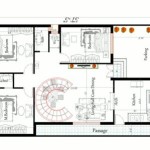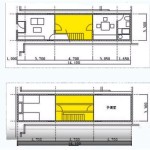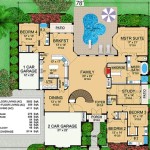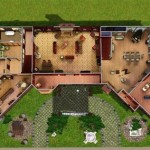Here’s an informative article about house plans with wood columns, adhering to the specified requirements:
House Plans With Wood Columns: An Architectural Exploration
Wood columns in house design represent a harmonious blend of structural integrity, aesthetic appeal, and historical precedent. Their use transcends mere support, serving as prominent architectural features that contribute significantly to a home's overall character. Understanding the nuances of incorporating wood columns into house plans involves considering various architectural styles, material choices, structural requirements, and aesthetic considerations.
Wood columns have enjoyed enduring popularity across a wide range of architectural styles, from the classical grandeur of Greek Revival to the rustic charm of Craftsman homes. This versatility stems from the inherent adaptability of wood as a building material. It can be shaped, finished, and styled to complement diverse design aesthetics. The presence of wood columns instantly elevates a building's visual interest, adding a sense of formality, warmth, or naturalness, depending on the chosen design and finish.
Choosing the right wood for columns is crucial and directly impacts both the appearance and the long-term performance of the structure. The selection process must consider factors such as durability, resistance to insects and decay, aesthetic appeal, and cost. Commonly used wood species include cedar, redwood, pine, and oak, each possessing unique characteristics that make them suitable for different applications. Treated lumber is often used in exterior applications to enhance resistance to moisture and pests, ensuring the columns maintain their structural integrity and visual appeal for years to come.
Structural Considerations for Wood Columns
Beyond their aesthetic contribution, wood columns play a vital role in the structural stability of a house. They function as vertical supports, transferring loads from the roof and upper floors down to the foundation. Properly sizing and spacing columns are paramount to ensure they can adequately bear the intended weight and withstand environmental stresses such as wind and snow. Engineering calculations are therefore essential in determining the appropriate dimensions and placement of wood columns, taking into account the specific loads and the overall design of the house.
The structural integrity of a wood column depends not only on its dimensions but also on the quality of the wood used and the construction techniques employed. Using seasoned, high-grade lumber that is free from defects is crucial to prevent warping, cracking, or other structural failures. Proper joinery techniques, such as mortise and tenon or metal fasteners, are necessary to ensure a strong and stable connection between the column and the supporting structure. Regularly inspecting and maintaining wood columns will help identify and address potential issues before they compromise the structure's integrity.
The base connection of a wood column is particularly important as it is exposed to moisture and physical damage. A well-designed base should protect the wood from ground contact and allow for adequate drainage to prevent rot. The column's capital, or the decorative element at the top, should also be securely attached and designed to distribute weight evenly to the supporting beam or structure above.
Aesthetic Variations in Wood Column Design
Wood columns offer a wide spectrum of design possibilities, allowing homeowners to customize their appearance to match their personal styles and the overall architectural theme of the house. Columns can be fluted, tapered, paneled, or left with a smooth, simple finish. The choice of finish, stain, or paint color further enhances their visual impact.
Classical columns, often found in Greek Revival and Neoclassical homes, feature distinct elements such as a base, a shaft, and a capital adorned with intricate carvings or moldings. The three main classical orders – Doric, Ionic, and Corinthian – each possess unique characteristics that define their respective capitals and column proportions. Replicas or adaptations of these classical orders are commonly used in modern homes to create a sense of timeless elegance.
In contrast, Craftsman and bungalow-style homes often feature simpler, square or rectangular wood columns with clean lines and minimal ornamentation. These columns are typically crafted from natural wood such as cedar or redwood and stained to highlight their natural grain. Their presence contributes to the warm and inviting atmosphere that characterizes these architectural styles. Modern interpretations of column design often incorporate minimalist forms and unconventional materials, blending the traditional aesthetic of wood with contemporary design principles.
Integrating Wood Columns into House Plans
Planning for wood columns should be an integral part of the house design process, starting from the initial conceptualization. Architects and designers must consider the columns' structural requirements, aesthetic impact, and relationship to the overall layout and flow of the house. The placement of columns can significantly affect the functionality and aesthetics of interior and exterior spaces.
On a porch or veranda, wood columns can define the outdoor living space, providing shade and creating a welcoming entry. In interior spaces, columns can be used to delineate open-concept areas, creating visual separation while maintaining a sense of spaciousness. They can also serve as focal points in a room, adding architectural interest and defining the style of the interior.
When integrating wood columns into house plans, it is important to consider the surrounding elements, such as windows, doors, and other architectural features. The columns should complement these elements in terms of style, proportion, and scale. A harmonious integration of wood columns within the house plan enhances the overall aesthetic appeal and functionality of the home.
The surrounding ornamentation of the columns is also a significant visual factor. A column's effect can be accentuated by the addition of brackets, cornices, mouldings, and other decorative attachments. These embellishments can be used to further enhance the architectural style of the house and create a more formal or elaborate look. In contrast, minimalist homes may opt for simple, unadorned columns to maintain a clean and contemporary aesthetic. The addition of lighting fixtures to columns can also create an interesting visual effect, highlighting their form and adding a warm glow to the surrounding area.
Ultimately, the successful incorporation of wood columns into house plans requires a thorough understanding of structural principles, aesthetic considerations, and the various design options available. By carefully planning and executing the design, homeowners can create beautiful and functional homes that showcase the timeless appeal and structural integrity of wood columns.

3 Bed 3870 Sq Ft Farmhouse Plan With Safe Room Wraparound Porch

Modern Style House Plan 2 Beds Baths 1679 Sq Ft 1064 280 Houseplans Com

Outdoorsy Emphasis Evident On All Sides

Craftsman House Plans With Impressive Porches Blog Dreamhomesource Com

House Plans The Hartford Home Plan 1048 Interior Columns Design Remodeling

Beautiful Small Country House Plans With Porches Houseplans Blog Com

Beautiful Farm House Style Plan 7876 Ruth Ann

House Plans With Photos Modern Farmhouse Exterior Paint

Beautiful Small Country House Plans With Porches Houseplans Blog Com

Wood Columns Brick Exterior House Acadian Style Homes








